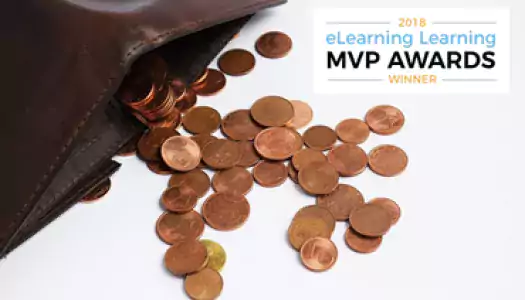Publicists are telling their clients, “Get a podcast.” Podcasting is the new talk radio, the new advertising, and the new book tour. It's time your association gets a podcast too. By adding podcasts to your online learning curriculum and communication strategy, you will attract the attention and loyalty of members, customers, and prospects, while enhancing the impact of your educational content.
A podcast is simply audio content that’s delivered digitally in the form of an MP3 file. Users listen to podcasts using an app on their mobile device or listen online with their computer. They can subscribe to a podcast’s feed or listen to individual episodes. Like associations, there’s a podcast for every topic you can imagine.
Who’s listening to podcasts?
Everyone, it seems, is starting to listen to podcasts. Monthly podcast consumption has doubled over the past five years. In its annual podcast consumer report, Edison Research said podcast listeners are predominately 18 to 54 years old, affluent, educated, and employed full-time. 85 percent of them listen to podcasts on some type of mobile device. The most popular scenario for podcast listening is at home, followed by the car, walking, and the workplace.
24 percent of Americans have listened to a podcast in the last month—an increase of 14 percent from last year. 15 percent listen to podcasts weekly, whereas only 3 percent of Americans go to the movies weekly. Weekly podcast listeners are committed to their habit. They spend an average of 5 hours and 7 minutes listening to podcasts every week. And, 85 percent of them listen to all (or most of) a podcast.
With the increasing sales of ‘connected’ cars and in-home voice assistants, like Amazon Alexa and Google Home, podcast consumption is expected to rise even more rapidly in the future.
Why podcasts belong in your online learning strategy
Podcasts are an ideal format for delivering educational content to adult learners because they are…
Habit-forming
Any regular podcast listener will speak fondly of their podcast habit. The average listener subscribes to six podcasts and listens to five shows per week. Because podcasts are released on a regular schedule, they become part of a listener’s daily or weekly routine. New listeners are highly likely to become regular listeners, according to Bridge Ratings Media Research, increasing their consumption as time goes on.
You can help your members develop a learning habit by publishing regular educational podcasts. “When you listen to a podcast every week, it inevitably becomes a real presence in your mind, in the way that reading a writer’s articles does not,” said Slate Plus editorial director Gabriel Roth. “There’s an intimacy with podcasts that makes people interested in getting more.”
Personal connection
When a podcast host (even an instructor) talks into your ear once a week, you feel more connected to them. You get used to their voice, conversational style, enthusiasms, and quirks. It’s a strangely more intimate relationship than the one you have with a weekly columnist or blogger, or TV journalist.
Convenience
Podcasts can be listened to anywhere and anytime. They don’t require full attention like reading and watching a video. Students can listen to a podcast while working out at the gym, driving or commuting home, preparing dinner, or doing chores. They can listen to them while they’re connected or download them to listen later while offline on a plane or hiking in the woods.
Bite-sized
The length of your podcasts will depend on the format and type of content you’re presenting. Many popular podcasts last an hour or more, but short podcasts may be more appealing to busy students. Experiment and find out what works best for your curriculum, but remember the benefits of spacing out learning in short segments of content.
Break from the screen
No one is immune from screen exhaustion. Podcasts give students an opportunity to learn with their ears while resting their eyes.
Inexpensive and easy to create
According to Craig Sorrell, podcaster and marketing manager at Results Direct, associations can get a podcast started with a mixer, a USB mic, and podcasting software for as little as $200. Producing a podcast is relatively easy compared to other media projects, and the learning curve is shallow.
Because podcasts can be recorded and released quickly, you can update your curriculum on the fly. Once the evergreen content is established, you can supplement it each cycle with more time-sensitive podcasts.
Using original and repurposed content in association podcasts
If you listen to a wide selection of podcast episodes, you’ll encounter a variety of formats:
- Conversation/interview between host(s) and guest(s)
- Monologue (lecture)
- Audience Q&A – live or with the host reading emailed questions
- Journalistic story with or without interviews
- News update
- Recording of a conference session or educational event
Podcast episodes can serve as weekly lectures, supplementary content, lesson reviews, and role-playing scenarios. Imagine experts discussing what’s new and relevant to their work, or interviews with conference speakers or industry leaders.
The Nationwide Claims Training Organization uses podcasts to teach technical information and soft skills to employees. They’ve created podcasts as standalone units and incorporated them into broader programs. “Honestly, I don’t think I would say there’s a type of learning that you couldn’t make this work for,” said Jeffrey D’Anza, design consultant with Nationwide Insurance.
Increasing revenue and membership with podcasts
Podcasts help you get your message out and show your value to a wider audience. If you want to introduce your association, profession, or industry to young listeners, podcasts are the way to go—38 percent of millennials listen to podcasts. Dr. Vincent Racaniello, who hosts podcasts for the American Society for Microbiology said listeners write to him all the time saying, “Your show has made me want to be a microbiologist. How do I do this? What do I do next?”
Many podcasts hosts take a few minutes during episodes to promote one of their products or services: a book, online course, in-person event, or appearances elsewhere. Your podcast can include ‘sponsored messages’ from the association about your online learning programs or, if episodes feature recorded conference sessions, your upcoming educational events.
Use your podcasts to blatantly recruit members too. Slate runs pledge drives on its podcasts for its paid membership program, Slate Plus.
Advertisers love podcasts. And they’ll love them even more now that Apple and other podcast platforms are improving analytics. Your association’s sponsors and advertisers will love them too. Why? Because 65 percent of listeners are more likely to buy an advertised product after hearing about it on a podcast.
Affiliate marketing is another popular source of passive income for podcast hosts. When a podcast host gives the audience a special promo code or URL for an advertiser’s product or service, they receive a percentage of any resulting sales.
Getting your association started with podcasts
Craig Sorrell, who regularly speaks about podcasting at association events, told Associations Now “that a weekly 30-minute podcast will take beginners about 45 minutes to record and an hour to edit. Planning out the shows and creating an outline of the discussions should take upwards of an hour a month.”
For more information, check out ASAE’s podcasting primer. A search online will also bring up dozens of helpful resources for podcasting newbies. If you want to stay on top of developments in the podcast world, subscribe to HotPod, a newsletter about the podcast industry.
One thing to remember: your listeners will have the same expectations for your audio content as they do for the podcasts they listen to regularly. The content must be interesting and relevant. The host must sound friendly and authentic, not scripted. Podcast listeners expect consistency—don’t start and stop, keep to a regular schedule.
And, no matter the format, think about story. “It doesn’t matter how good your production value is, how good your sound effects are, if the story you’re telling isn’t an engaging one. You have to hook the person in and make them want to keep listening,” D’Anza said.
The growth of podcasting is driven by the power of conversation. Like any good learning experience, you must hold the listener’s attention and keep them engaged. Do that and they’ll keep coming back for more.








